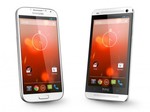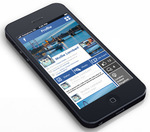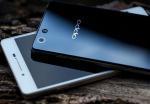Which is Better - Headphones, Earphones, or Speakers - Android
When it comes to audio peripherals, the three basic choices are headphones (over-ear), earphones (in-ear), and speakers. While they all serve different purposes, and...
The post Which is Better: Headphones, Earphones, or Speakers? appeared first on YugaTech | Philippines Tech News & Reviews.
When it comes to audio peripherals, the three basic choices are headphones (over-ear), earphones (in-ear), and speakers. While they all serve different purposes, and it boils down to personal preference, especially between the first two, they are inherently better at certain things.
This isn’t exactly meant to be a buyer’s guide, as you can’t compare apples to oranges to bananas. However, it may give some of you some guidance on which to get if you could only get one at the moment.
Headphones
Headphones are traditionally known as wearable audio devices with a pair of speaker drivers on either side, worn over the ears. Headphones have two pairs of form factors — on-ear or over-ear and open-back or closed-back.
Tackling the first pair, they mean exactly how they sound. On-ear headphones are the kind where the earcups just rest directly over your ears. Over-ear headphones have the cups completely cover your ears.

The former has the advantage of being smaller and lighter; however, sound quality typically isn’t as good as its counterpart. They can get uncomfortable due to the pads directly pressing on your ears. The latter has the advantage of being able to isolate sound more effectively, resulting in superior quality. They’re more comfortable, though they are certainly bulkier and heavier.
Now on the subject of open-back and closed-back, again, they mean exactly how they sound. It refers to the backs of the earcups being either open or closed. Closed-back headphones can keep sound in, while open-back headphones let sound leak out. Again, each has its own merits.

Since open-back headphones allow sound to leak out, it prevents certain lower frequencies from building up like they would in closed-back headphones. This makes them ideal for mixing and mastering engineers who need the sound to be as flat and accurate as possible. Simultaneously, open-back headphones are often the go-to choice of many audiophiles as they can listen to music exactly how the artist intended it to sound. But then again, they do leak out the sound. If this isn’t ideal for your situation and use case, closed-back may be your best bet.
Closed-back headphones don’t leak out the sound, making them much better at isolating sound. The lower frequencies discussed earlier that build up inside the cups of closed-back headphones may actually be something you prefer for casual listening. They also open the possibility for noise-canceling, whether in the form of active noise-canceling that uses microphones to listen for low-frequency noise and neutralize it with software algorithms or passive noise-canceling under the headphones’ pads, creating a seal around your ears.

No matter what kind of headphones you get, they have their unique advantages and disadvantages. On the positive side, they can have superior sound quality for various purposes. They can be more comfortable to wear than earphones, and their larger size allows for more technology to be housed. However, on the flip side, their size can also be seen as a disadvantage as this makes them less portable, plus they are generally more expensive than earphones.
Earphones
In contrast to headphones, earphones audio devices are worn in the ear instead of over the ear. There are a couple of styles, including those that sit just outside your outer ear (ex. Apple AirPods) and those that go slightly deeper into your ear. (ex. Apple AirPods Pro, Samsung Galaxy Buds). The second kind comes with rubber or silicone buds. They come in different sizes, and they feature different cushion designs to fit more comfortably. Some earphones are shaped to lock into the concha, and others have a protrusion to fit further into the ear canal.

There’s another one called In-ear Monitors (IEMs). Unlike standard earphones, IEMs are specifically designed and used by musicians, audio engineers, and audiophiles to listen to music or hear a personal mix of vocals and stage instrumentation for live performance or recording studio mixing. It’s also used to reduce their overall exposure to loud sounds and hearing loss when performing on stage.

You may also often hear about noise-cancellation. First, let’s talk about the simplest noise canceling method, passive noise cancellation. This works by physically blocking all outside noise by sealing your ears. In-ear monitors and over-ear headphones are good examples of these, as they cover either the ear canal or your whole ear entirely. This particular type of noise cancellation is typically advised for users at home (or those who aren’t mobile), so they can focus on the sounds they want to hear without distractions or outside noise. However, for those commuting or who need to be aware of their surroundings, using audio devices with passive noise cancellation is not recommended.

Another method is Active noise cancellation (or ANC). Active noise cancellation requires mics and an ANC controller to record the ambient sound frequencies and reverse the audio device to playback.
There’s more advantage than a disadvantage when it comes to earphones as there are types that cater to your budget and needs. Plus, compared to headphones, they are more portable and less expensive. The audio quality may not be as immersive as the ones from headphones, but there are great earphones in the market that are available as well.
Speakers
Speakers are output devices designed to work specifically with computers or be hooked up to any sound system. The first type usually comes in pairs (left and right channel) which allows them to produce stereo sound, while surround system types may include four to seven speakers (with subwoofer), making much fuller and realistic sound. You can see this type in home theater setups.

As you know, speakers aren’t the most portable device to carry around, plus, they can be quite expensive. But what makes them advantageous compared to wearable audio devices is that the listening experience is much more immersive, and the sound quality is much superior.
To answer the question of which is better among these audio devices, it will still boil down to what you need at the moment. Undoubtedly, headphones and speakers have superior sound quality to earphones. Still, earphones are a much better choice for portability and general use since they come in a different style.
And there you have it. We hope we helped you pick the right audio device for your needs. Please share with us your thoughts below!
With input by Joey Maceda
The post Which is Better: Headphones, Earphones, or Speakers? appeared first on YugaTech | Philippines Tech News & Reviews.
20/02/2021 11:45 AM
The Link - Yamaha redefines connection in short sci-fi film
20/02/2021 02:21 AM
BlastAsia introduces Steer, a DIY cloud platform for SMEs
20/02/2021 08:46 AM
‘Adulting’ made easy by ShopeePay
20/02/2021 02:34 PM
5 Ways To Free Up Storage Space On Your Google Drive
20/02/2021 11:24 AM
Cashalo confirms data breach, NPC investigates
20/02/2021 08:03 AM
OPPO Reno5 4G and Reno5 5G now officially available in the Philippines!
20/02/2021 12:02 AM
- HEALTH
- Comics
- Libraries & Demo
- Sports Games
- Racing
- Photography
- Transportation
- Media & Video
- Sports
- Health & Fitness
- Weather
- Medical
- Cards & Casino
- Arcade & Action
- Personalization
- Social
- Communication
- Productivity
- Casual
- Shopping
- Tools
- Brain & Puzzle
- Business
- News & Magazines
- Finance
- Lifestyle
- Music & Audio
- Entertainment
- Travel & Local
- Books & Reference
- Education







